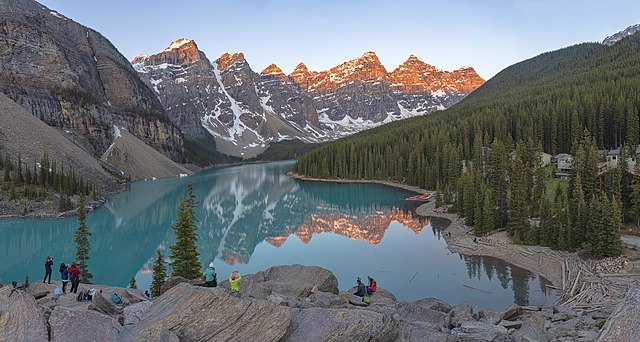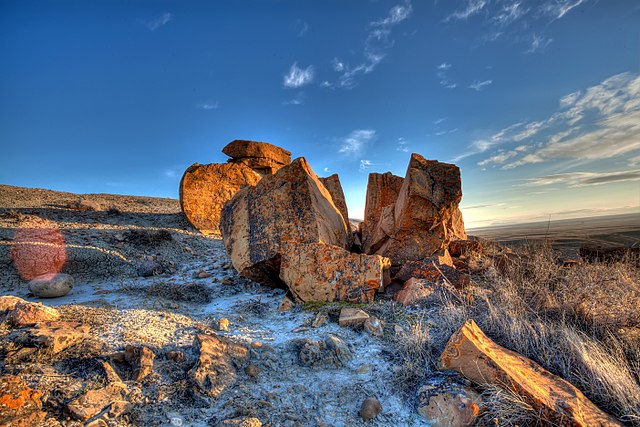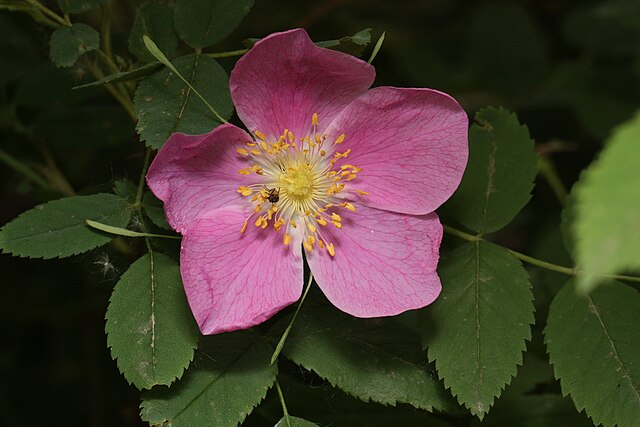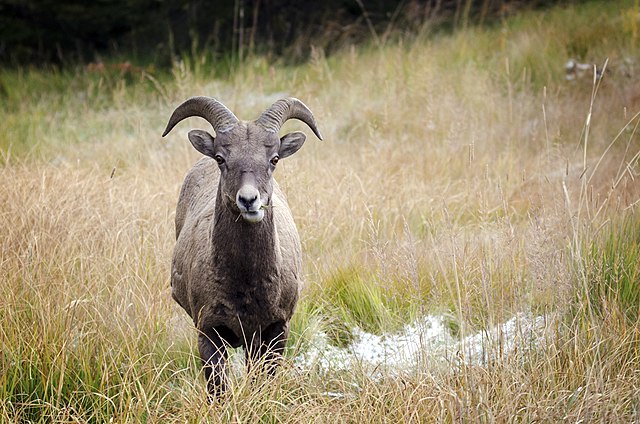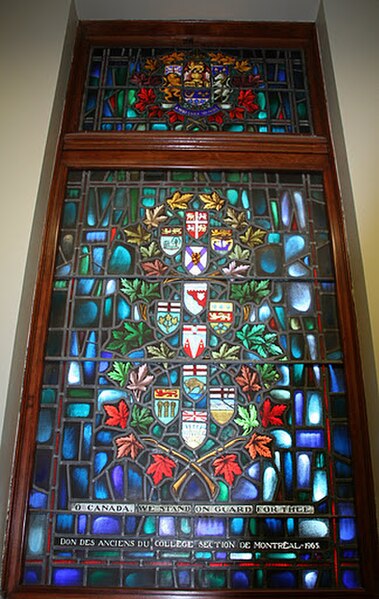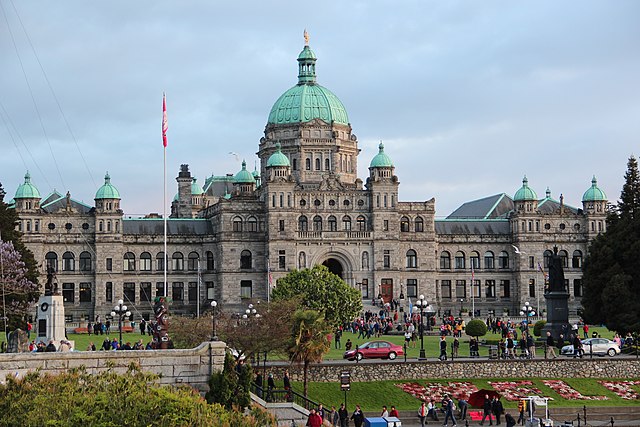Alberta is one of the thirteen provinces and territories of Canada. It is a part of Western Canada and is one of the three prairie provinces. Alberta borders British Columbia to the west, Saskatchewan to the east, the Northwest Territories to the north, and the U.S. state of Montana to the south. It is one of the only two landlocked provinces in Canada, with Saskatchewan being the other. The eastern part of the province is occupied by the Great Plains, while the western part borders the Rocky Mountains. The province has a predominantly continental climate but experiences quick temperature changes due to air aridity. Seasonal temperature swings are less pronounced in western Alberta due to occasional Chinook winds.
Moraine Lake at Banff National Park. The Alberta Mountain forests makes up the southwestern boundary of Alberta.
Southeastern Alberta features a semi-arid steppe climate.
The wild rose is the provincial flower of Alberta.
A bighorn sheep in Kananaskis Country. The bighorn sheep is the provincial mammal of Alberta.
Provinces and territories of Canada
Canada has ten provinces and three territories that are sub-national administrative divisions under the jurisdiction of the Canadian Constitution. In the 1867 Canadian Confederation, three provinces of British North America—New Brunswick, Nova Scotia, and the Province of Canada —united to form a federation, becoming a fully independent country over the next century. Over its history, Canada's international borders have changed several times as it has added territories and provinces, making it the world's second-largest country by area.
"O Canada we stand on guard for thee" Stained Glass, Yeo Hall, Royal Military College of Canada featuring arms of the Canadian provinces and territories as of 1965
Alberta Legislature Building
British Columbia Parliament Buildings
Manitoba Legislative Building

